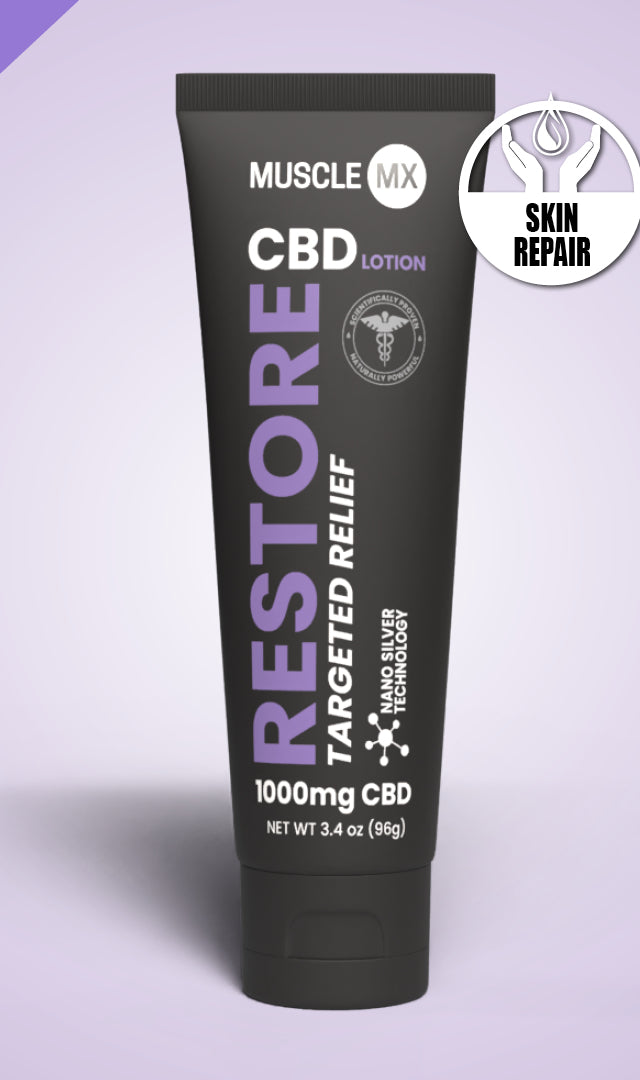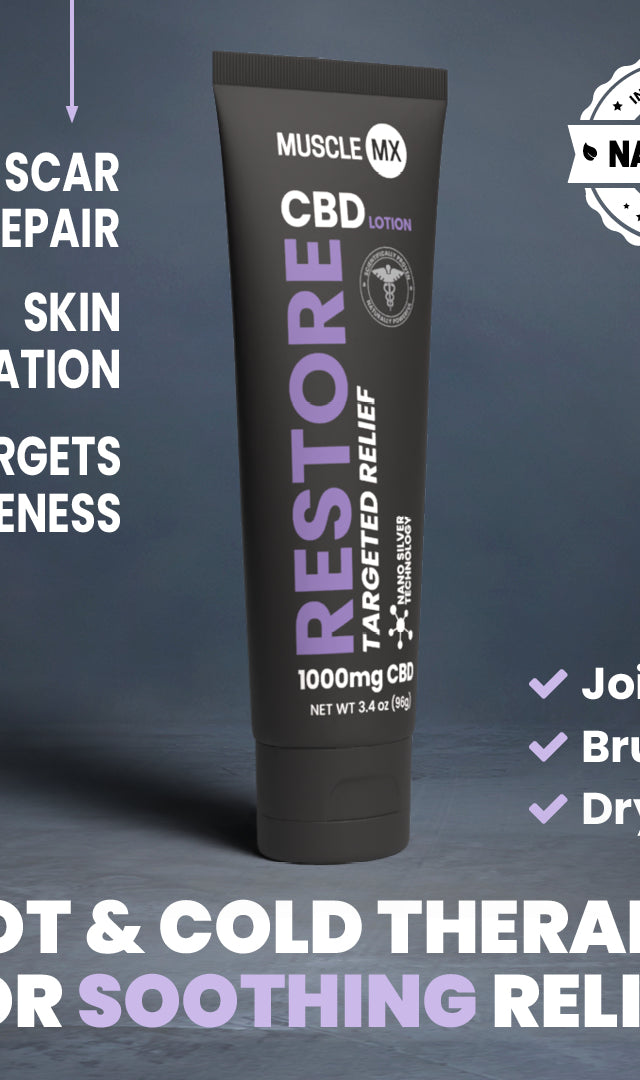Have you ever experienced burning, stinging, or shooting pain when your skin is exposed to something that wouldn't usually cause pain? That's known as allodynia, a condition where the skin becomes extra sensitive to stimuli that wouldn't usually cause pain. On the other hand, skin sensitivity refers to a condition where the skin becomes overly sensitive to touch, causing temporary discomfort or chronic pain. In this article, we'll explore the causes of skin sensitivity and allodynia and discuss various treatment options.
At the heart of the nervous system lies the central nervous system (CNS), which, among other things, processes pain signals from the skin and other regions of the body. The CNS, comprised of the brain and spinal cord, functions as the central hub of the nervous system, receiving and processing sensory information from the body and directing motor responses accordingly. The CNS plays a pivotal role in skin sensitivity and allodynia, as it is responsible for processing pain signals from the skin. When the skin is exposed to potentially harmful stimuli, such as heat or pressure, the nerves within the skin transmit pain signals to the CNS. The CNS, in turn, processes these signals, determining the appropriate response. In some cases, the CNS may become overly sensitive to these pain signals, resulting in heightened sensitivity to touch.
What Are Neurotransmitters?
Neurotransmitters, chemical messengers that transmit signals between nerve cells, also play a vital role in pain processing. When exposed to painful stimuli, the nerves within the skin release neurotransmitters, including substance P, glutamate, and calcitonin gene-related peptide (CGRP), which activate pain-sensing nerve fibers. These neurotransmitters then stimulate the CNS, leading to the experience of nerve pain. In some instances, the CNS may become sensitized to these pain signals, leading to increased sensitivity to touch and discomfort. This can happen due to nerve damage, inflammation, or underlying health conditions. When the CNS is sensitized, even mild stimuli can result in substantial pain, leading to skin sensitivity and allodynia.
What Are the Types of Skin Pain?
Now that we’ve covered the basics, let’s dive into the various types of skin pain that can lead to skin sensitivity and allodynia. Each type presents differently and provides valuable insight into what exactly causes skin sensitivity in the first place. Working to identify the type of skin pain you might be experiencing is a key part of finding the right solution or treatment plan. When you know what is causing your symptoms and why, it becomes easier to narrow in on a treatment approach that will effectively address the issue.
Thermal Allodynia
Thermal allodynia is a condition in which the skin becomes excessively sensitive to changes in temperature, eliciting discomfort and pain. This type of pain is characterized by symptoms such as burning, stinging, or shooting pain, often arising from exposure to heat or cold. The symptoms of thermal allodynia can affect everyday activities, such as bathing, cooking, or even simply touching a warm or cold object.
Mechanical Allodynia
Mechanical allodynia is when the skin becomes overly sensitive to pressure or touch, resulting in discomfort and pain. The symptoms of mechanical allodynia can range from pain, discomfort, or tenderness when the skin is touched, making it difficult to perform routine tasks such as getting dressed or washing.
Tactile Allodynia
Tactile allodynia is when the skin becomes excessively sensitive to light touch, eliciting discomfort and pain. Even the slightest touch can cause discomfort in individuals with tactile allodynia. From a gust of wind to certain textures of fabric, tactile allodynia can be exacerbated by many everyday experiences, and its symptoms can greatly affect everyday life.
Itching Allodynia
In this condition, the skin becomes overly sensitive to touch, leading to the feeling of itchiness. The itchiness elicited by itching allodynia is not only unbearable, but it’s also almost impossible to scratch, presenting a formidable challenge for individuals struggling with this condition. In addition, the underlying mechanisms of itching allodynia are not well understood, highlighting the need for further research and investigation.
How Is Skin Pain Treated?

Allodynia can present a significant challenge for individuals struggling with this condition. Therefore, understanding the connection between allodynia and its treatment options is crucial in pain management and alleviating symptoms.
Topical Solutions: Over-the-Counter Creams and Ointments
In the case of allodynia, over-the-counter creams and ointments, such as lidocaine and capsaicin, can work by desensitizing the skin to reduce discomfort and pain. For example, applying a lidocaine cream to a skin area affected by allodynia can help to numb the skin, potentially reducing the sensitivity and pain associated with the condition.
Physical Therapy
Physical therapy and lifestyle changes can also play a significant role in alleviating allodynia symptoms. Physical therapy can help to retrain the nervous system, reducing sensitivity and discomfort. Your physical therapist can work with you to slowly build your tolerance to certain stimuli, like specific movements. Over time, you may find that this process helps minimize the symptoms you experience, and that you are better able to complete daily tasks without discomfort.
Lifestyle Changes
Lifestyle changes, such as stress management techniques and a healthy diet, can also help to improve overall health and wellness. For instance, practicing relaxation techniques and engaging in regular physical activity can help to reduce stress levels and improve the functioning of the nervous system. Additionally, eating an anti-inflammatory diet can help minimize any inflammation that may be contributing to skin sensitivity. At the same time, cutting out inflammatory substances like caffeine, sugar, and alcohol can also help support your nervous system. Finally, you may want to incorporate soothing products into your daily skincare routine. Gentle moisturizers and cleansers can help keep the skin free from bacteria and soothe irritation.
Cognitive Behavioral Therapy and Mental Health Support
Sometimes, allodynia can be exacerbated by underlying mental health conditions, such as anxiety or depression. Cognitive behavioral therapy can help individuals to better manage and cope with their symptoms while addressing any underlying mental health conditions that may be contributing to their discomfort. For example, working with a cognitive behavioral therapist to develop coping mechanisms for managing stress can help to reduce the severity of allodynia symptoms. Additionally, developing coping mechanisms for the pain itself can help those with skin sensitivity to overcome their symptoms and support their overall quality of life.
Prescription Medications
Prescription medications, such as opioids, can also play a role in treating allodynia. These medications can provide significant relief, but it is essential to consider the potential side effects and risk factors. For instance, taking a low-dose opioid medication under the direction of a healthcare professional can help reduce the pain associated with allodynia while minimizing the risk of side effects. However, for itching allodynia, opioids may exacerbate the symptoms. This can happen because opioids trigger an immune response by activating surface proteins on mast cells, which can cause further itching.
Wrapping Things Up
The underlying causes of allodynia can be diverse and complex, ranging from conditions such as shingles and chickenpox to sunburn and other external stimuli. Skin sensitivity can also indicate other underlying medical conditions and can be a symptom of migraine headaches and fibromyalgia. The central nervous system, in particular the spinal cord, plays a critical role in processing pain signals from the skin and can contribute to skin sensitivity. By working with a healthcare professional and incorporating practices to help soothe skin irritation, such as skincare and moisturizing, individuals can manage their allodynia and improve their overall wellness. If you're searching for a holistic approach to support your wellness, look no further than Muscle MX.
Sources: Allodynia: When Touch Hurts But Shouldn't | AMF The role of calcitonin gene-related peptide (CGRP) in the generation and maintenance of mechanical allodynia and hyperalgesia in rats after intradermal injection of capsaicin | ScienceDirect Opioid-Induced Itching | Journal of Pain and Symptom Management
















































